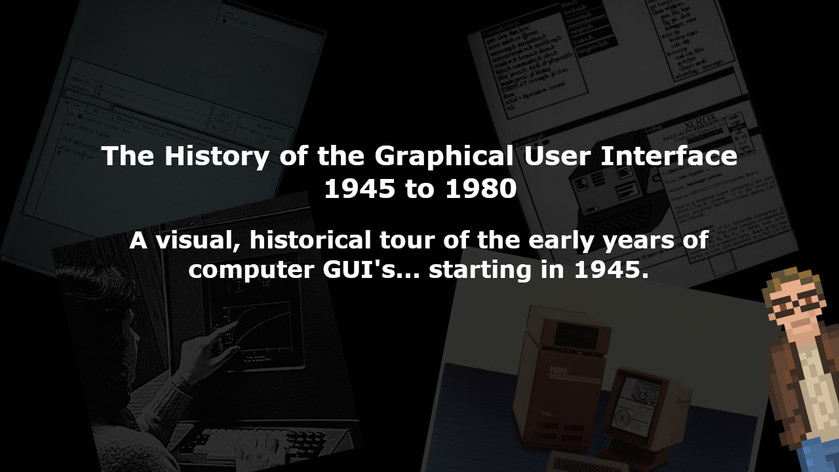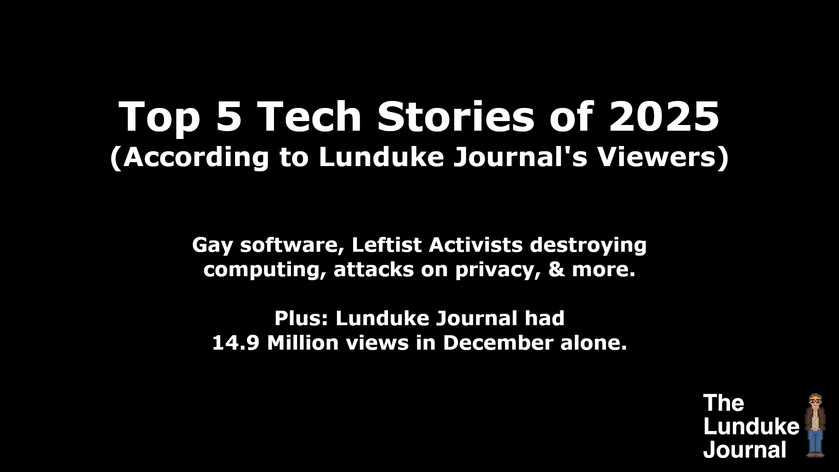The 1980s and 1990s were an amazing time in computer history… with so many well known stories of computer GUI’s that have become instantly recognizable.
The Macintosh. Windows. So many others.
But how did we get here? What were things like before the 1980s? How did the graphical user interfaces of computers get their start?
For that… we need to go back to the end of World War II. When songs like "Sentimental Journey" ruled the radio.
1945
In 1945, Vannevar Bush (the first Director of the USA’s Office of Scientific Research and Development during World War II) wrote an article, published in The Atlantic, entitled “As We May Think”.
This article turns out to be one of the most critical works in the history of computing and it describes a new machine… which Bush calls the “Memex”. Essentially… what we now call the Personal Computer.
“It consists of a desk, and while it can presumably be operated from a distance, it is primarily the piece of furniture at which he works. On the top are slanting translucent screens, on which material can be projected for convenient reading. There is a keyboard, and sets of buttons and levers. Otherwise it looks like an ordinary desk.”
Bush also describes ways of storing, retrieving, and interacting with information within the “Memex”. What he describes is the precursor to things like Hypertext, structured file systems, wide area networks (and the Internet) and… Graphical User Interfaces.
I can’t recommend reading this essay strongly enough. Vannevar Bush was absolutely brilliant.
1963
Flash forward to 1963. A man named Ivan Sutherland, who was working on his PhD in Electrical Engineering & Computer Science, was inspired by Bush’s Memex to build a highly graphical computer system.
Not a hypothetical one. Not a concept. Something real.
He built the software on Lincoln TX-2 — which had a whopping 64K 36-bit words of memory, absolutely mammoth for the time. This massive amount of memory was going to be necessary for the ambitious graphical plan that Sutherland had in mind.
Fun side note: The Lincoln TX-2 was also the computer where the first simulation of packet switching networks was run by Leonard Kleinrock. Like using the Internet? Thank Leonard and the Lincoln TX-2.
What Sutherland created was something truly remarkable.
A system where the user could work, with a lightpen, on a graphical display with immediate feedback. Vector graphics. Flowcharting. 3D Modelling. Object oriented design.
If you have never seen this demo before, it is an absolute must watch. As you’re watching, remember that this was from 1963. And nothing like this had ever been done before.
1968
During the 1960s, Douglas Engelbart was working on a computing system of his own, funded by the US Air Force, NASA, and ARPA. His work was heavily influenced by both Bush’s “As We May Think” essay, and by Sutherland’s Sketchpad. He built on both of them heavily to create many of the User Interface concepts we know today.
In order to accomplish his goals, in 1968, Engelbart’s development efforts settled on the SDS 940. Powered by a 24-bit CPU (yeah, you read that right), 64 kilowords of 24bit memory and (get this) 4.5 MB of Swap. Oh! And 96 MB of storage.
In the ‘60s! The SDS 940 was an absolute beast of a machine!
Using this machine, Engelbart’s team developed what they called the “oN-Line System” or simply “NLS”.
More fun trivia time: Why was the “oN-Line Sytem” called “NLS” instead of “OLS”? You see, one of the early machines in use (prior to the SDS 940) simply wasn’t beefy enough to handle more than one user. So, for a time, the system was actually two related systems… the “Off-Line Text System” (which they abbreviated to “FLTS”) and the “On-Line Text System” (NLTS). Those just seemed like the best acronyms to them. Eventually the system added graphical capabilities (read: not just text). So they dropped the “Text”… and NLTS became NLS.
In December of 1968, Engelbart gave a 90 minute demonstration of the NLS that would come to be known as “The Mother of All Demos”.
If you haven’t seen this (or seen it lately), it is highly recommended.
Remember that this is all happening in 1968. 14 years before the release of the Commodore 64.
1969
Remember that amazing SDS 940? The computer behind “The Mother of All Demos”?
Well, Xerox bought Scientific Data Systems in 1969. And, with it, the SDS 940.
Scientific Data Systems was renamed Xerox Data Systems.
Remember this for later.
1972
While all of this was going on, during the 1960s, a team at the University of Illinois was building and refining PLATO - Programmed Logic for Automatic Teaching Operations. A computer system for teaching.
Over time new versions of PLATO were rolled out with increasingly advanced features. And, by 1972, PLATO IV had some pretty darned impressive ones.
Bitmapped graphics. A touch screen (in a 16x16 grid… so not exactly super precise… but still impressive). Digital audio stored to a hard drive. Voice and music synthesizers. Along with drawing software and, I kid you not, emojis. Yeah. The first emojis were created in 1972 on the PLATO IV.
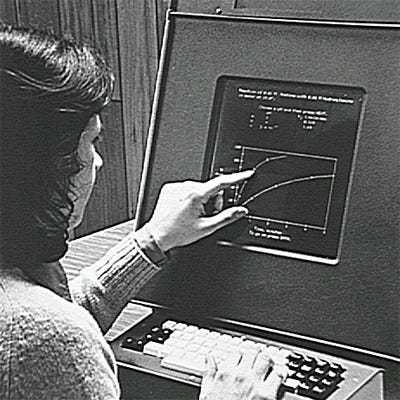
Remember how Xerox had purchased the company that made the SDS 940? Well, researchers from Xerox Palo Alto Research Center (Xerox PARC) were given a detailed tour of PLATO IV in 1972.
And they took notes.
A gentleman by the name of Butler Lampson — who, as it would happen, was instrumental in the development of the Berkeley Time Sharing System for the SDS 940 — was one of the founding members, and a principal scientist, of Xerox PARC.
In December of 1972, Lampson wrote a memo to Xerox Corporate to request funds to build “a substantial number (10 - 30)" of Alto workstation computers.
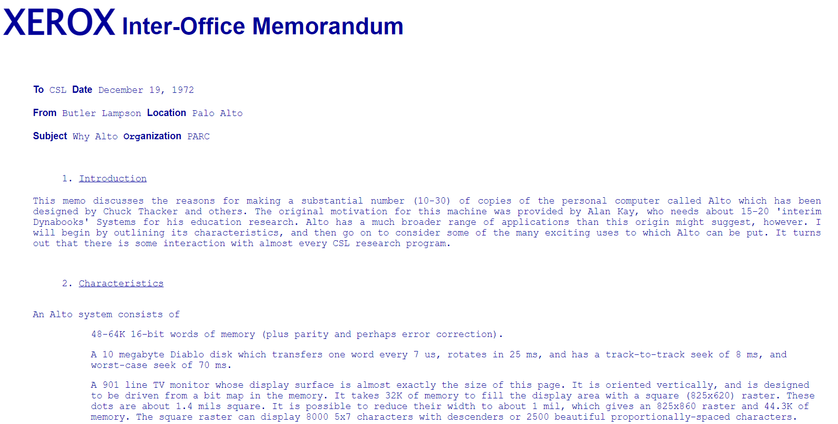
Inspiration around the Alto came from many places. Including from the work of Engelbart on the SDS 940 (the mouse, windows, and more) and from PLATO IV.
1973
And now we arrive to a point in history that is a bit more often discussed.
In 1973, Xerox PARC unveils the Alto. A computer with a mouse. Movable windows. A “desktop” (with folders and icons). WYSIWYG document layout. Bitmap and vector graphics editing. Object Oriented programming (in Smalltalk).
This system had it all.
It took many of the concepts that came before… from Memex to Sketchpad to oN-Line System to PLATO IV… and refined. Combined it all together, added some innovations of their own, and polished it into a complete system ready for use.
For the first time, we had a graphical user interface that was more than a demo. More than a proof of concept.
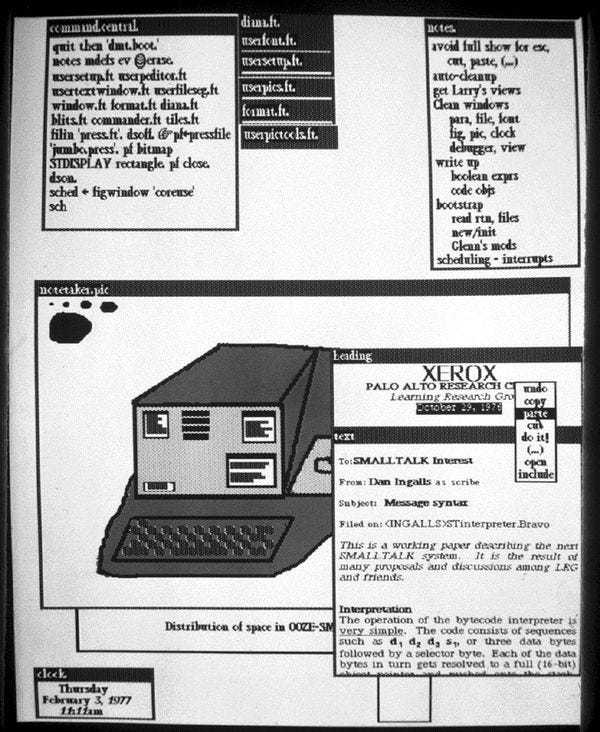
As ground-breaking, and truly remarkable as the Alto was… only about 2,000 were ever made. And, for several years, the idea of a mass market Personal Computer with a graphical User Interface proved elusive.
1979
First launched in 1979, but not shipped until 1980, the PERQ workstation represented one of the first post-Alto attempts at a commercial, graphical user interface workstation PC.
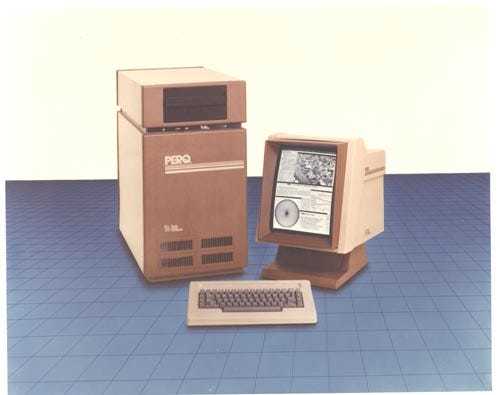
These were certainly not cheap systems. As you can see from this PERQ 1979 pricing list:
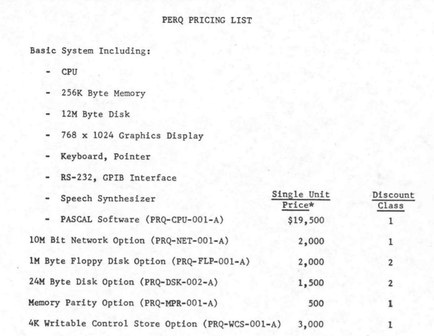
But it certainly came with a lot of features. This was a heck of a system!
The primary operating system was single-tasking, graphical, and heavily centered around the Pascal programming language. (Which… is a sentence that could also be used to exactly describe both the Apple Lisa and Apple Macintosh that would appear a few years later.)
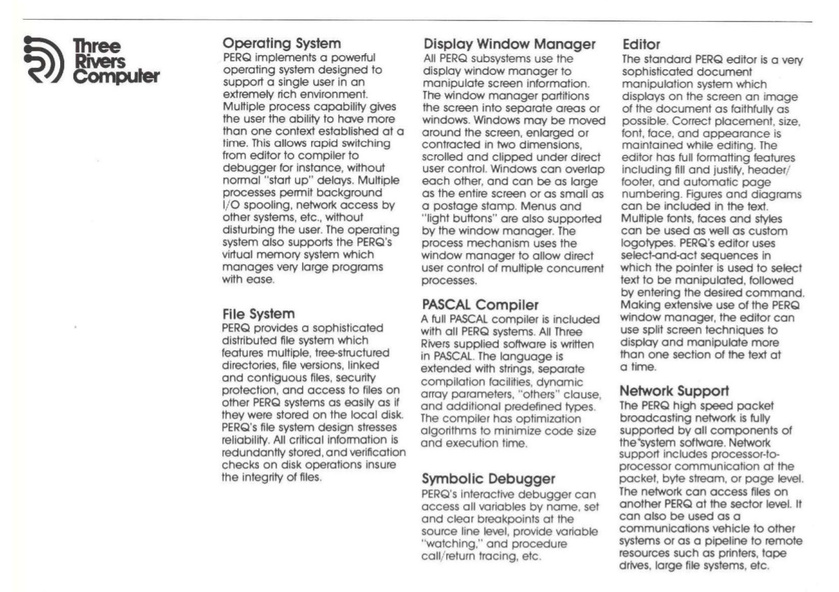
Unfortunately the PERQ is mostly lost to time and seldom referenced nowadays. The final revision (the PERQ 2) launched in 1983, with the company being purchased… and the new parent company scrapping the in-development PERQ 3 by 1985.
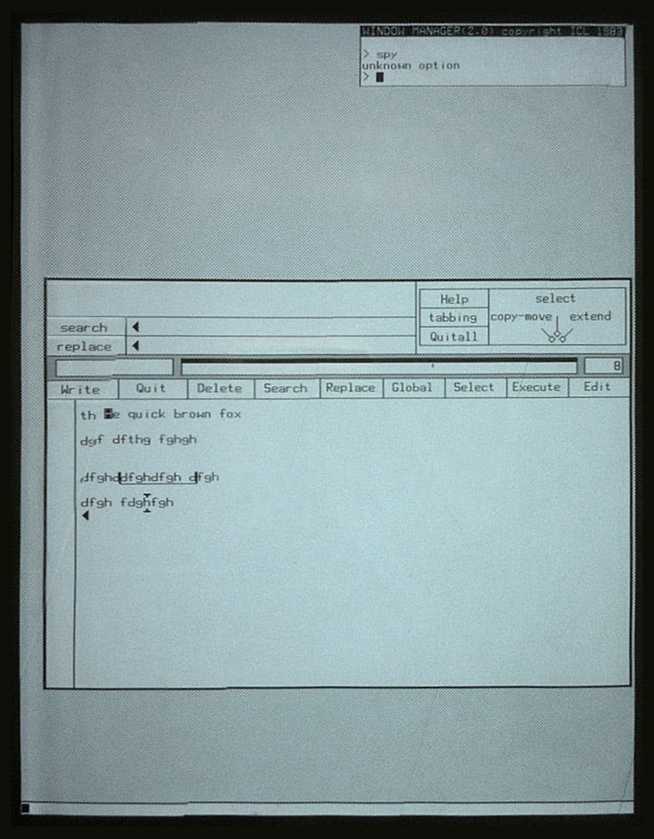
Which… brings us to the end of the 1970s.
Around this time, Steve Jobs took a tour of Xerox PARC and left with a great many ideas.
And, within the next 5 to 6 years, multiple companies (including Apple, Microsoft, Visi Corp, and Commodore… just to name a few) would release graphical user interfaces to run on their operating systems and personal computers.
And so much of it stems from 1945… and the Memex.
